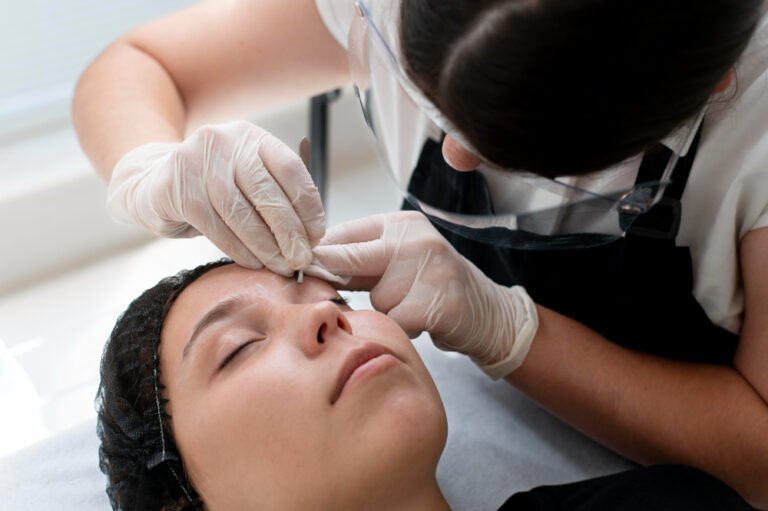For many people, male fertility is often assumed to be “timeless.” While it’s true that men can father children later in life, male fertility does decline with age—and it can show up clearly in fertility test results. If you’re considering starting a family or undergoing fertility testing, your age plays a more significant role than you might expect.
This article explains how male fertility testing differs in your 20s vs. 40s, what changes biologically over time, and what your test results may reveal at each stage.
Does Male Fertility Decline with Age?
Yes—but not as dramatically or predictably as in women. Men do not have a defined “fertility cutoff” like menopause, but research shows:
- Sperm quality begins to decline gradually after age 35–40
- Older age is associated with longer time to conception, higher miscarriage risk, and increased chances of genetic abnormalities in offspring
- Aging also increases the risk of certain fertility-related conditions
Key Fertility Tests for Men of Any Age
Regardless of your age, the core components of male fertility testing remain the same:
🧪 1. Semen Analysis
Assesses:
- Sperm count (concentration and total number)
- Motility (movement)
- Morphology (shape and structure)
- Volume and pH of semen
- Sperm vitality (alive vs. dead sperm cells)
🩸 2. Hormonal Testing
Blood tests measure:
- FSH and LH: Pituitary hormones that stimulate sperm and testosterone production
- Total and free testosterone
- Prolactin and thyroid function (TSH)
- Estradiol (especially in older or obese men)
🧬 3. Genetic and DNA Fragmentation Testing (if needed)
Advanced testing includes:
- Y chromosome microdeletion analysis
- Karyotyping
- Sperm DNA fragmentation index (DFI)
These are typically ordered if the man is older, has poor semen parameters, or if IVF/ICSI is being considered.
Fertility Testing in Your 20s
✅ Advantages:
- Higher sperm count, motility, and morphology on average
- Better testosterone levels and hormone balance
- Lower risk of sperm DNA fragmentation
- Lower chance of needing assisted reproduction
🔬 Common Findings:
- Most semen parameters fall within normal WHO reference ranges
- Test results are typically more resilient to lifestyle factors
- Hormone levels are stable unless other health issues are present
🚨 Considerations:
- Younger men may still have undiagnosed conditions like varicocele or genetic infertility
- Even in your 20s, factors like smoking, heat exposure, and obesity can impact test results
- Early fertility preservation (sperm banking) may be advisable for men with cancer, low sperm count, or upcoming gender-affirming care
Fertility Testing in Your 40s
🔻 Age-Related Changes:
After age 40, subtle but measurable changes occur in reproductive health:
- Sperm concentration and motility decline
- DNA fragmentation increases, affecting embryo quality and pregnancy outcomes
- Hormone levels (testosterone) may decrease, impacting libido and sperm production
- Sperm morphology becomes less optimal
🧪 Test Result Patterns:
| Parameter | 20s (Typical) | 40s (Typical) |
|---|---|---|
| Sperm count | 40–100+ million/mL | 15–40 million/mL |
| Motility | >50% | 30–50% |
| Morphology (Kruger) | 5–15% normal | 2–6% normal |
| DNA fragmentation index | <15% | >20–25% in many cases |
| Testosterone | 500–800 ng/dL | 300–600 ng/dL |
Note: These numbers are general trends and can vary widely by individual.
⚠️ Additional Testing May Be Needed:
- DNA fragmentation testing becomes more relevant, especially if using IVF or ICSI
- Genetic counseling may be recommended due to increased risk of certain conditions in offspring (e.g., autism, schizophrenia, Down syndrome)
How Age Affects Fertility Treatment Options
In Your 20s:
- Natural conception is typically more achievable
- Minor fertility issues (like a varicocele) often resolve with treatment
- Assisted reproduction, if needed, has higher success rates
In Your 40s:
- May require IUI or IVF due to reduced sperm quality
- Higher likelihood of using ICSI (intracytoplasmic sperm injection) if sperm motility or morphology is poor
- Longer time to conception, even with good lifestyle habits
- Couples may be counseled on embryo genetic testing (PGT) due to paternal age
Lifestyle Factors: Compounding the Age Effect
At any age, poor lifestyle habits can further reduce fertility—but their impact tends to be amplified in older men:
| Factor | Effect in 20s | Effect in 40s |
|---|---|---|
| Smoking | Lowers sperm quality | Significant DNA damage risk |
| Obesity | Hormone imbalance begins | Greater testosterone decline |
| Alcohol/Drugs | Impairs motility | Affects hormone and sperm DNA |
| Stress | May lower libido | Affects testosterone more |
| Heat exposure | Minimal short-term effect | More damaging over time |
Making changes in your 20s can help preserve fertility into your 40s.
When Should You Get Tested?
- If you’re under 35 and trying to conceive for 12+ months
- If you’re over 40 and trying for 6+ months
- If you’re considering sperm banking, IVF, or a vasectomy reversal
- If you have a partner with known fertility issues or advanced age
Final Thoughts
Whether you’re in your 20s or 40s, male fertility testing offers valuable insights into your reproductive health. In your 20s, it provides reassurance and planning tools. In your 40s, it can help uncover age-related changes and guide treatment choices.
The key takeaway? Male fertility is not immune to time. Taking a proactive approach—through testing, lifestyle optimization, or sperm preservation—can give you more options, control, and success when you’re ready to start a family.




